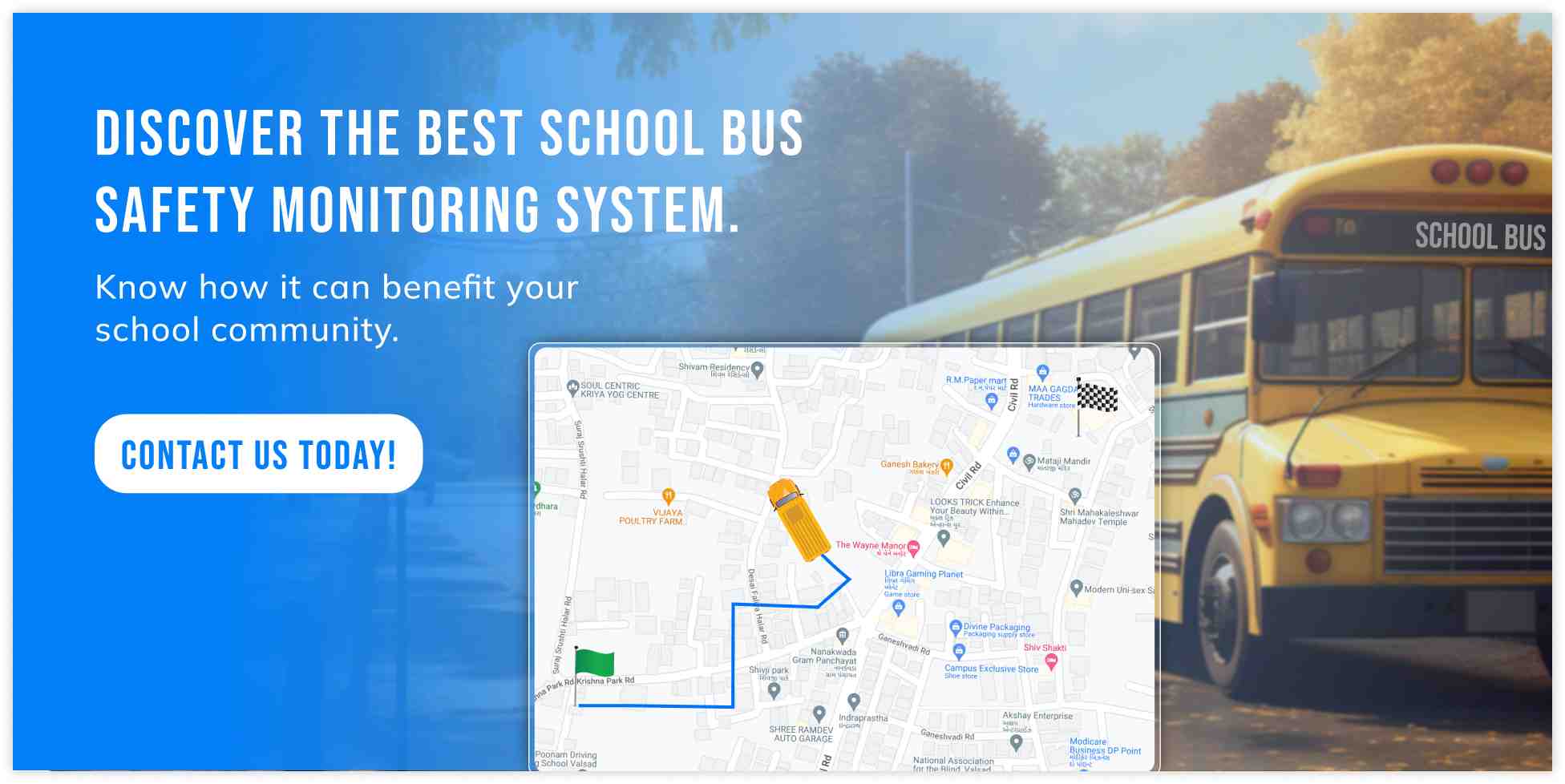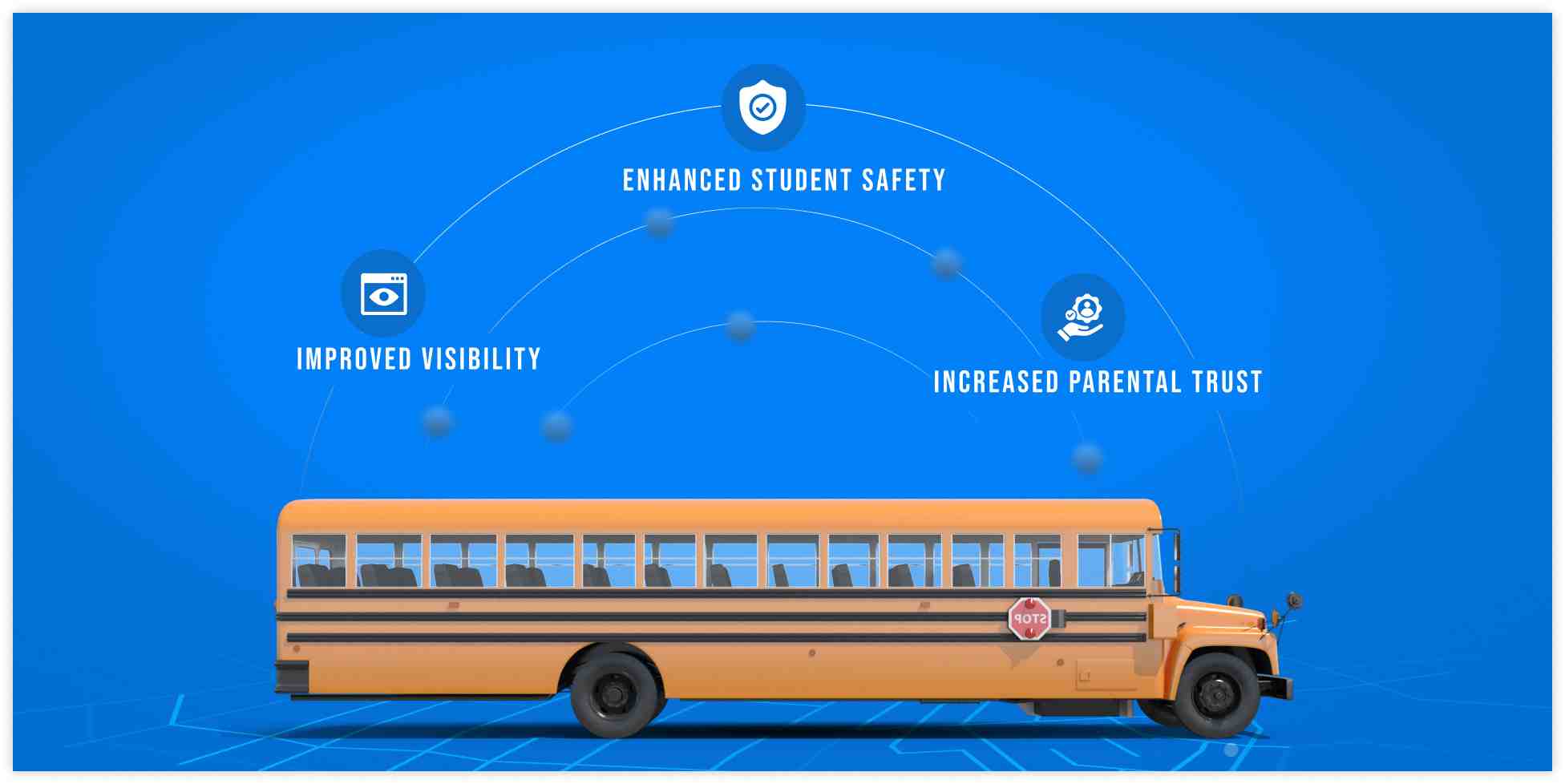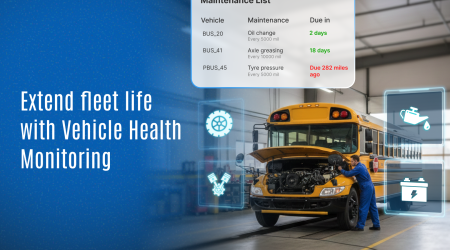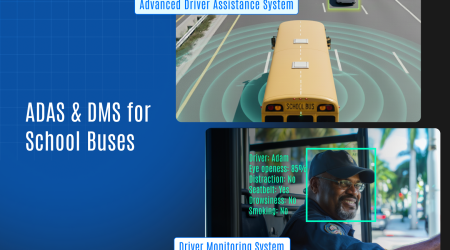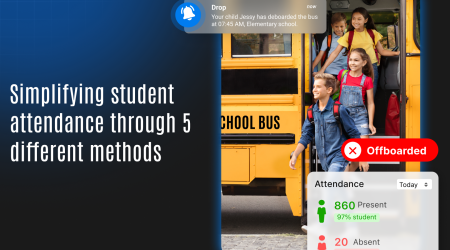The Ultimate Guide to School Bus Safety Monitoring

Keeping students safe on their daily school bus rides is a major concern for both schools and parents. With the rising demand for secure and efficient transportation, advanced school bus safety monitoring software has become essential for the school transportation business. This guide is designed to help those in the industry effectively market and sell these safety solutions. We’ll explore the software’s key benefits, standout features, and practical tips for implementation, providing valuable insights to showcase the importance and value of this technology in school transportation.
⟶ Top 8 School Bus Routing Software to Used in 2025
What is School Bus Safety Monitoring?
School bus safety monitoring involves using technology to track and manage school buses, ensuring the safety of students from the moment they board the bus until they reach their destination. This software provides real-time data and insights, helping schools and parents stay informed about their children’s whereabouts and bus conditions.
Key Components and How It Works
Let’s check out some of the key components of School Bus Safety Monitoring
GPS Tracking
Real-time GPS tracking provides accurate location updates of the bus at any given moment. This feature is accessible via mobile apps and web portals, allowing school administrators and parents to monitor the bus’s route and location continuously. This ensures that the whereabouts of each bus are always known, enhancing safety and operational efficiency.
Live Video Feeds
Continuous monitoring through live video feeds from cameras installed on the bus offers an additional layer of security. These feeds allow school administrators and parents to view the interior and exterior of the bus in real-time, ensuring that students are safe and any incidents are immediately visible and can be addressed promptly.
Safety Alerts
The system generates notifications for any safety incidents or deviations from the planned route. For instance, if a bus enters an unauthorized area, exceeds speed limits, or stops unexpectedly, the system sends immediate alerts to relevant parties, enabling quick responses to potential issues.
Student Attendance Tracking
The software records when students board and disembark the bus, ensuring that no child is left behind. This feature helps in maintaining accurate attendance records, improving safety by ensuring that all students are accounted for during the commute.
Route Optimization
Advanced algorithms help in planning the most efficient routes, taking into account factors such as traffic, distance, and school schedules. This not only saves time and fuel but also ensures that buses run on schedule, enhancing reliability and reducing operational costs.
Driver Behavior Monitoring
The system tracks driver activities such as speed, harsh braking, and idling, promoting safe driving habits. Monitoring driver behavior helps in improving overall safety and reducing the risk of accidents by encouraging adherence to safe driving practices.
Benefits of School Bus Safety Monitoring
Check out some of the advantages of school bus safety.
Enhanced Student Safety
Real-time tracking ensures that students are always accounted for, reducing the risk of accidents or mishaps. Live video feeds and safety alerts provide an additional layer of security, making sure that any issues are immediately addressed.
Parental Peace of Mind
Parents can track the bus’s location and receive notifications about pick-up and drop-off times. This ensures they know their child’s status at all times, reducing anxiety and improving communication between parents and schools.
Efficient Fleet Management
Schools can optimize routes, monitor driver behavior, and ensure buses are well-maintained. This leads to cost savings and improved service, as well as enhanced operational efficiency and reliability.
Emergency Response
In case of emergencies, the software provides immediate alerts and the exact location of the bus. This enables quick response actions, ensuring that help can be dispatched without delay and parents are promptly informed.
Case Studies: Mount St. Marry School District: Enhanced Safety and Efficiency
Background
Mount St. Marry School is a large district with over 50 schools and a fleet of 200 school buses. They faced significant challenges in ensuring student safety, optimizing bus routes, and maintaining high levels of parental satisfaction.
Challenges
- Frequent Accidents: The district experienced a higher-than-average number of minor bus accidents, leading to concerns about student safety. These incidents not only posed risks to the students but also affected the district’s reputation.
- Parental Concerns: Parents were often anxious about their children’s safety and the reliability of the bus service, leading to numerous complaints and a lack of trust in the school transportation system.
- Inefficient Routes: The district struggled with optimizing bus routes, resulting in longer travel times, higher fuel costs, and inefficient use of resources.
Implementation
To address these challenges, Mount St. Marry School District implemented a comprehensive school bus safety monitoring system. Key features included:
- Real-Time GPS Tracking: Enabled real-time tracking of all buses, providing accurate location updates to parents and school administrators. This feature ensured that the whereabouts of each bus were always known, enhancing safety and efficiency.
- Live Video Feeds: Installed cameras on buses to provide live video feeds, allowing school administrators and parents to monitor student behavior and bus conditions in real-time. This added an extra layer of security and helped quickly address any issues.
- Safety Alerts: Implemented a system for generating instant alerts for any safety incidents or deviations from the planned route. This enabled quick responses to potential issues, ensuring student safety.
- Route Optimization: Used advanced algorithms to plan the most efficient routes, considering factors such as traffic, distance, and school schedules. This reduced travel times and fuel costs, making the bus service more reliable and efficient.
- Driver Behavior Monitoring: Monitored driver activities such as speed, harsh braking, and idling, promoting safe driving habits. This helped in reducing the risk of accidents and improving overall safety.
Results
- Reduced Accidents: The district saw a 30% reduction in bus accidents, significantly improving student safety and the district’s reputation.
- Increased Parental Satisfaction: Parental satisfaction improved by 40%, with fewer complaints and higher levels of trust in the school transportation system.
- Optimized Routes: The district achieved a 20% reduction in fuel costs and travel times, leading to more efficient use of resources and better service reliability.
SD Heritage Pride School: Enhanced Student Safety and Parental Trust
SD Heritage Pride School is a medium-sized school with a fleet of 50 buses. They aimed to enhance student safety and build greater trust with parents regarding the school transportation system.
Challenges
- Safety Concerns: The school faced concerns about student safety during bus rides, with incidents of bullying and misconduct on the bus.
- Parental Anxiety: Parents were anxious about their children’s safety and the reliability of the bus service, leading to frequent inquiries and complaints.
- Lack of Visibility: The school struggled with a lack of real-time visibility into bus operations, making it difficult to address issues promptly.
Implementation
To address these challenges, SD Heritage Pride School implemented an advanced school bus safety monitoring system with the following features:
- Live Video Feeds: Installed cameras on buses to provide live video feeds, allowing school administrators and parents to monitor student behavior and bus conditions in real-time. This helped in quickly addressing any issues and improving student safety.
- Real-Time GPS Tracking: Enabled real-time tracking of all buses, providing accurate location updates to parents and school administrators. This feature ensured that the whereabouts of each bus were always known, enhancing safety and efficiency.
- Safety Alerts: Implemented a system for generating instant alerts for any safety incidents or deviations from the planned route. This enabled quick responses to potential issues, ensuring student safety.
- Student Attendance Tracking: Recorded when students boarded and disembarked the bus, ensuring no child was left behind. This feature helped in maintaining accurate attendance records and improving safety.
Results
- Enhanced Student Safety: The school saw a significant improvement in student safety, with a reduction in incidents of bullying and misconduct on the bus.
- Increased Parental Trust: Parental trust and satisfaction improved by 50%, with fewer complaints and higher levels of confidence in the school transportation system.
- Improved Visibility: The school gained real-time visibility into bus operations, allowing for prompt addressing of issues and enhanced overall efficiency.
Common Challenges and Solutions
Typical Problems
- Resistance to Change: Some schools and drivers may resist new technology due to unfamiliarity or fear of added complexity.
- Integration Issues: Difficulty in integrating the new software with existing school management systems.
- Training Requirements: Ensuring all users, including drivers, school staff, and parents, are properly trained to use the new system effectively.
How to Overcome These Challenges
- Engage Stakeholders Early: Involve all stakeholders in the decision-making process to gain buy-in and address any concerns they may have about the new technology.
- Seamless Integration: Work closely with IT teams to ensure smooth integration of the software with existing systems, minimizing disruptions and ensuring a cohesive operation.
- Comprehensive Training: Provide thorough training sessions and ongoing support to all users, ensuring they are comfortable with the system and can maximize its benefits.
Conclusion
By leveraging advanced school bus safety monitoring software, schools can significantly enhance student safety, improve operational efficiency, and provide peace of mind to parents. System integrators play a crucial role in delivering these benefits to schools, helping them adopt and effectively use this technology. By understanding the features, benefits, and implementation strategies, system integrators can successfully market and sell school bus safety monitoring software to their end customers.
